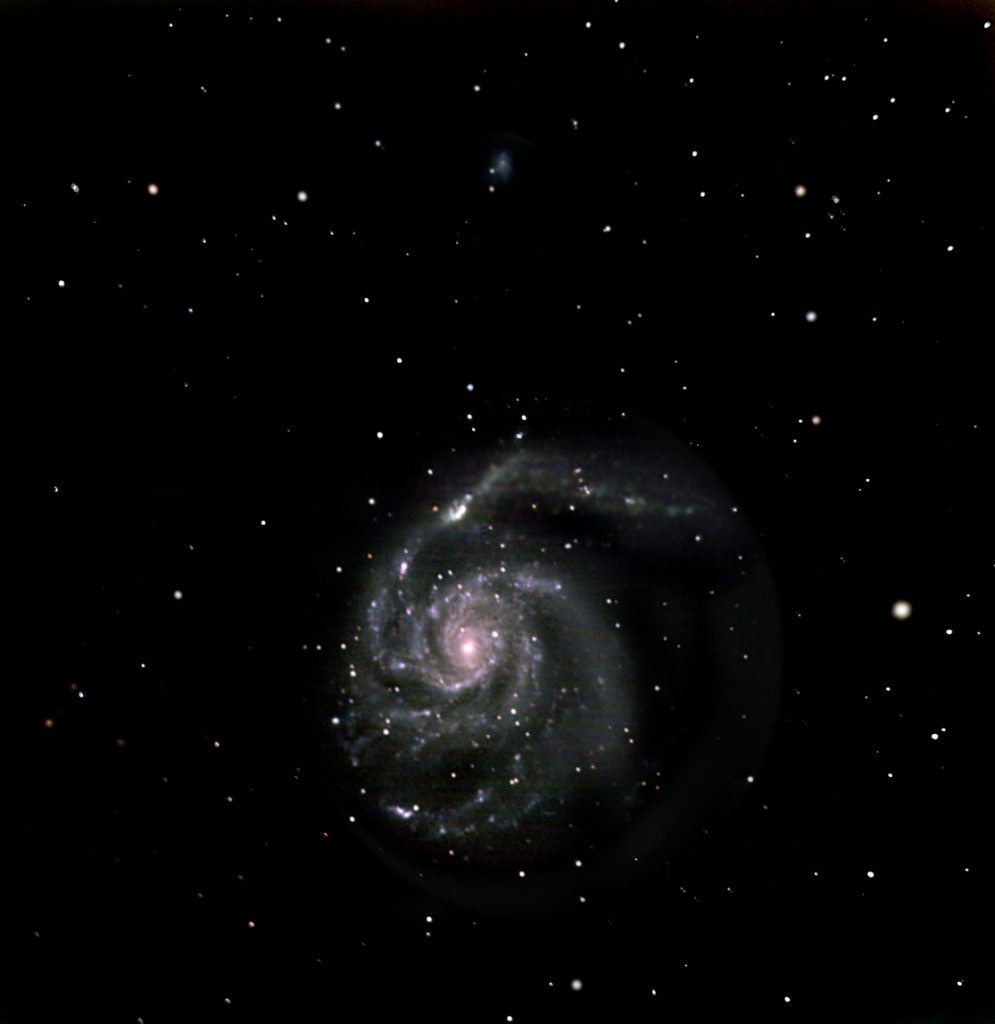APRIL 2021
Springtime Galaxies imaged with a Schmidt-Newtonian
[This is just one of many articles in the author’s Astronomy Digest.]
Spring is an excellent time to image some of the galaxies in the Messier Catalogue: Leo is high in the south containing the Leo Triplet of M65, M66 and NGC 3628 (the ‘Hamburger Galaxy’) and the pair of galaxies, M95 and M96, whilst Ursa Major is high overhead containing the ‘Whirlpool Galaxy’, M51, the pair of galaxies M81 and M82 and the ‘Pinwheel Galaxy’, M101.
Using a field of view calculator and entering the camerasensor’s pixel size and dimensions one can find the appropriate focal lengthtelescope with which to image, say for example, the Leo Triplet. As seen in the screen capture below, a telescopeof ~800 mm would be ideal when used with a camera having a Micro 4/3 sensor.
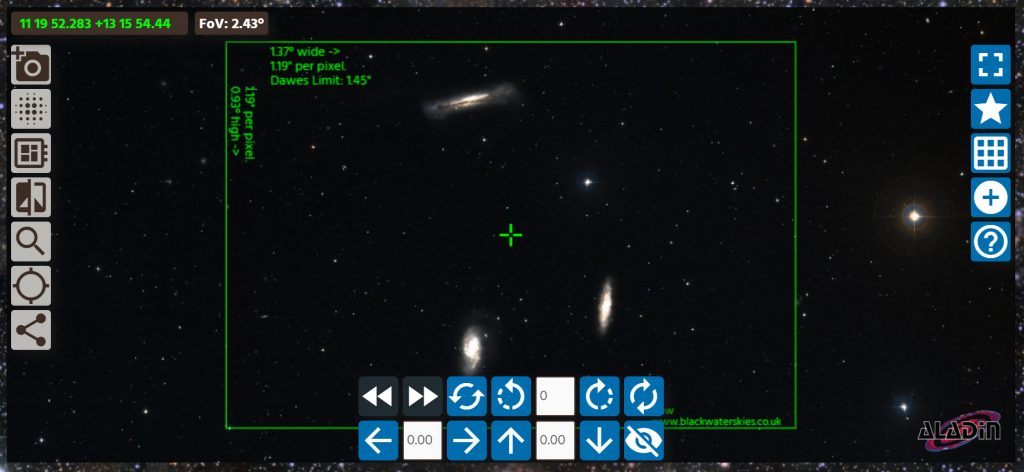
This could be an 102 mm, f/8, refractor but there is better alternative; a 200 mm, f/4, Newtonian which will collect ~4 times more light for a given total exposure. This means that, for the same exposure, the noise level will be reduced by a half in the image taken by the Newtonian and that the same noise level would be obtained with a total exposure 1/4 of the length. The practical result is that one can, as shown in the images below, obtain quite reasonable results with total exposures of ~1 hour. An excellent example is the ‘TS-PHOTON 8″ F4 Advanced Newton’ available from Altair Astro for £455. For astrophotography use, a coma corrector such as the ‘Baader MPCC Multi Purpose Coma Corrector Mark III’ from Rother Valley Optics at ~£129 or, at significantly higher cost, the four element ‘TS-Optics NEWTON Coma Corrector 1.0x GPU Superflat’ will be required. So a first class f/4 ‘astrograph’ could be obtained for around £600.
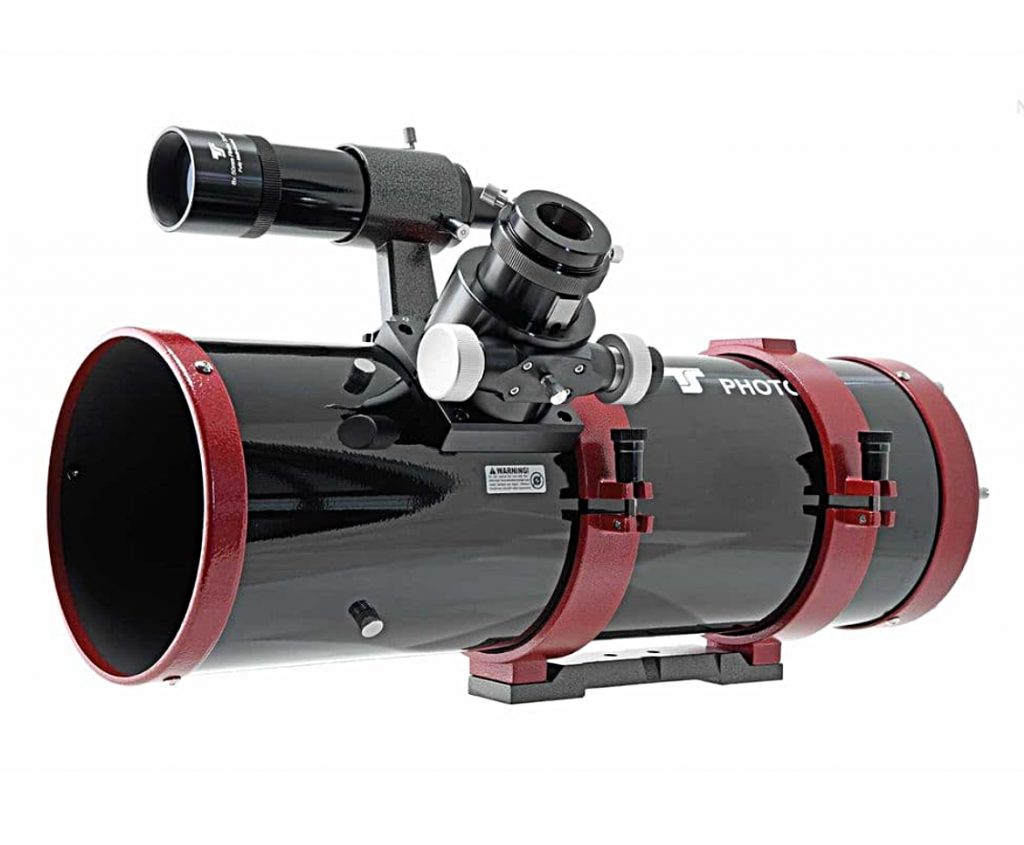
There is an alternative in the form of the Schmidt-Newtonians that were once made by Meade and also Orion Optics in the UK.
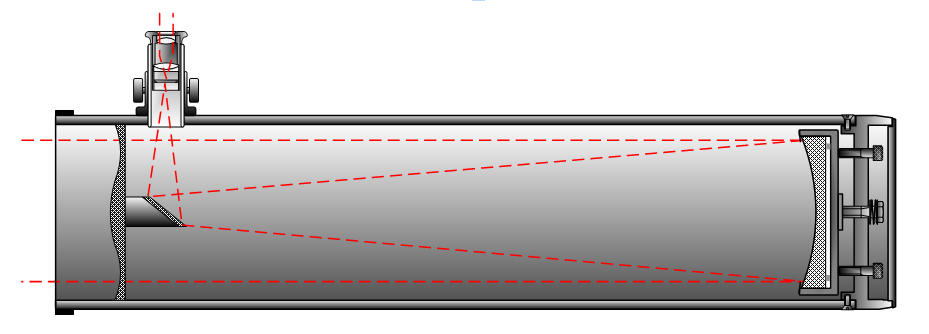
These can sometimes be acquired second hand. The image below is of the Orion Optics (UK) version but I have the Meade 8 inch (203 mm), f/4, S-N which, with its steel tube, weighs 24 lbs. The Meade focuser is a weakness. These suffer from half the coma of a Newtonian and, with a camera having a Micro 4/3 sensor, do not require the use of a coma corrector. The images below were taken using this telescope allied to an Altair Astro 294c PRO cooled Micro 4/3 camera cooled to -15C.
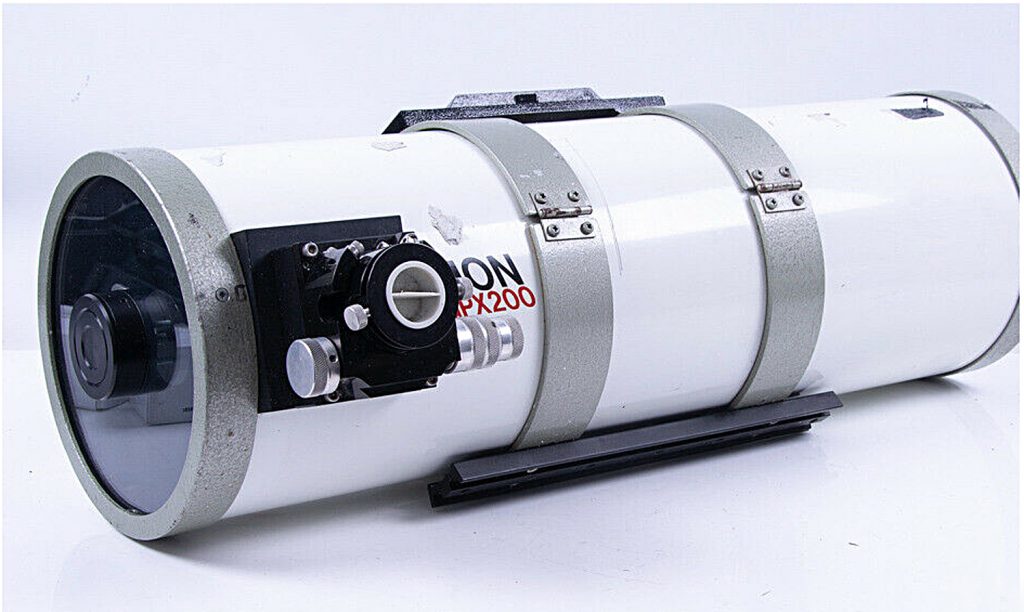
The mount used was an Astro-Physics Mach1 which has a peak to peak tracking error of 7 arc seconds and, when accurately aligned on the North Celestial Pole using a QHY Polemaster, does not need to be autoguided. The final, fine adjustment, step using the QHY Polemaster was not employed as I do not want perfect alignment. I actually prefer the sky to move a little across the sensor during the total exposure to better sample the colour and remove what is called ‘Colour Mottling’. [When autoguiding is employed, ‘Dither’ is used to give the same result.] Prior to each imaging session, the polar alignment was checked and adjusted if necessary.
Exposures of 20 seconds were used, though 100 second exposures would not have shown any star trailing. The images were captured using ShapCap Pro and the camera gain adjusted until there were sufficient stars in each subframe to enable them to be aligned and stacked in Deep Sky Stacker. If individual subframes were taken using a longer exposure and lower gain, the dynamic range would be greater. However, if 20 second exposures are used rather than say 100 seconds, then five times as many subframes will be stacked. Due to the fact that noise is present, the dynamic range will then be increased to a greater extent than with fewer 100 second exposures. I suspect, though I have never seen this discussed on the web, that the end result will be similar. A total exposure of one hour having 180 subframes were taken for the images apart from M101 where 112 minutes of 30 second exposures were taken .
One advantage of taking shorter exposures is that relatively fewer sub frames will be affected by satellite trails. Scanning through 60, 60 second, exposures taken by a colleague, 6 included satellite trails. These can be removed by using the Kappa-Sigma stacking mode in Deep Sky Stacker (as for the M101 image), but if 180, 20 second, exposures had been stacked instead they may well have been lost in the noise. In only one of the images shown below, was a single trail faintly visible and this was easily cloned out.
At the end of each observingsession, 25 dark frames were taken. If,as was the case, these have the same exposure as the light frames (as theyshould) the bias current is included and there is no need to take any biasframes. Honest. As there is significant light pollution frommy urban location, it is possible to derive a flat frame from the light framesif one wishes to employ one. The digestincludes an article ‘Producing a flat frame from the light frames’. Below is the flat frame for thetelescope/camera combination. There isonly a small light loss, some 15%, towards the corners so there was no need touse flat frames.

The AA 294c camera has a pixelsize of 4.63 microns. If used with an800 mm focal length telescope this corresponds to 1.2 arc seconds per pixel. As the resolution of the atmosphere willnormally limit the resolution to 2 or more arc seconds and the nominal resolutionof an 800 mm mirror is ~0.6 arc seconds (so having little effect on the resolution),the AA 294c camera satisfies the Nyquist Sampling theorum. So, assuming that the telescope is wellcollimated and accurately focused, the images should be about as sharp astheoretically possible.
The Galaxy Images
There are far, far, better images of these galaxies taken from dark sky locations and having taken considerably longer exposures, but these do show that quite pleasing images can be taken with just one hours total exposure from a light polluted location one mile from the heart of a town. Articles in the digest show how the light pollution was removed from the images.
The Leo Triplet

M81 and M82
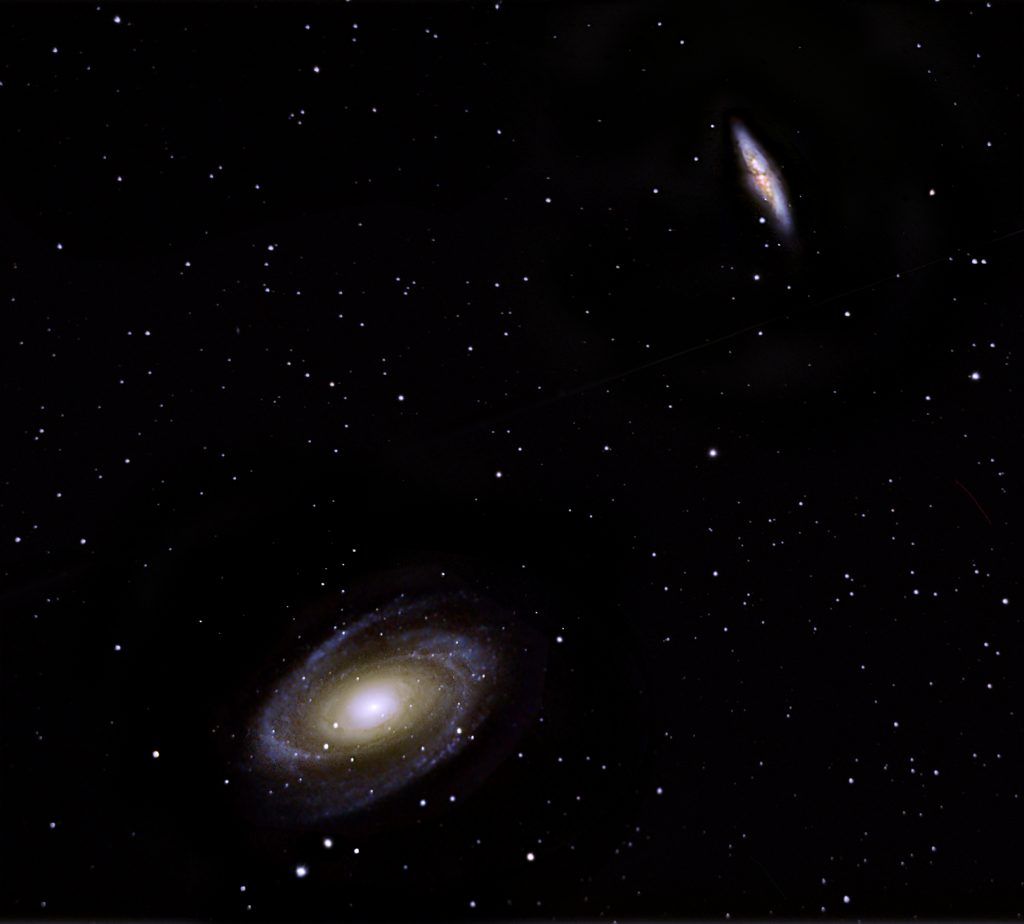
Adding an H-alpha emission layer to M82
I was pleased with the result but had hoped that some of the H-alpha emission that is seen in professional telescope images of M82 might have been more visible and wondered if it would be possible to carry out some imaging in the light of H-alpha emission using an H-alpha filter.
If I employed my AA 294c camera, only 1 in 4 pixels would be used due to the Bayer matrix (2 Green, 1 Red and 1 Blue in each 2 pixel square array). However, as it had worked well with an image of the Rosette Nebula, I thought that it would be worth giving it a try. So, on the next clear night, I first centred M82 in the field of view of the AA 294c with a Baader 7 nm bandwidth H-alpha filter screwed into the T-mount barrel to couple with the focuser of the 8 inch, f/4, Schmidt-Newtonian.
I first used the ‘Live Stacking’ mode in SharpCap to check that the sub frames could be stacked. To see sufficient stars in a single subframe the camera gain had to be very high – there is no point in using a low gain if the subframes cannot be aligned and stacked! I then saved 60, 60 second subframes as 24 bit RGB Tiff files. These were stacked in Deep Sky Stacker using the Kappa-Sigma stacking mode to help clean the image.
Some of the H-alpha emission was visible producing the enhanced image below.
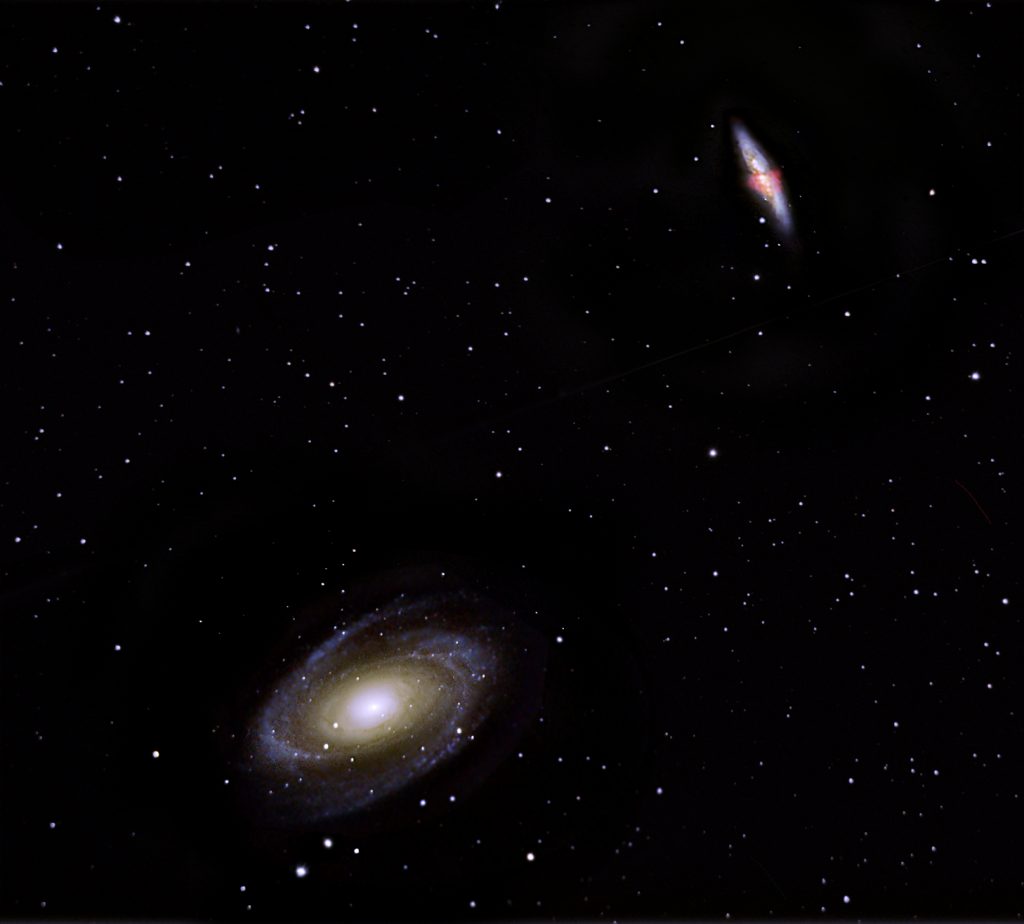
M51, the Whirlpool Galaxy
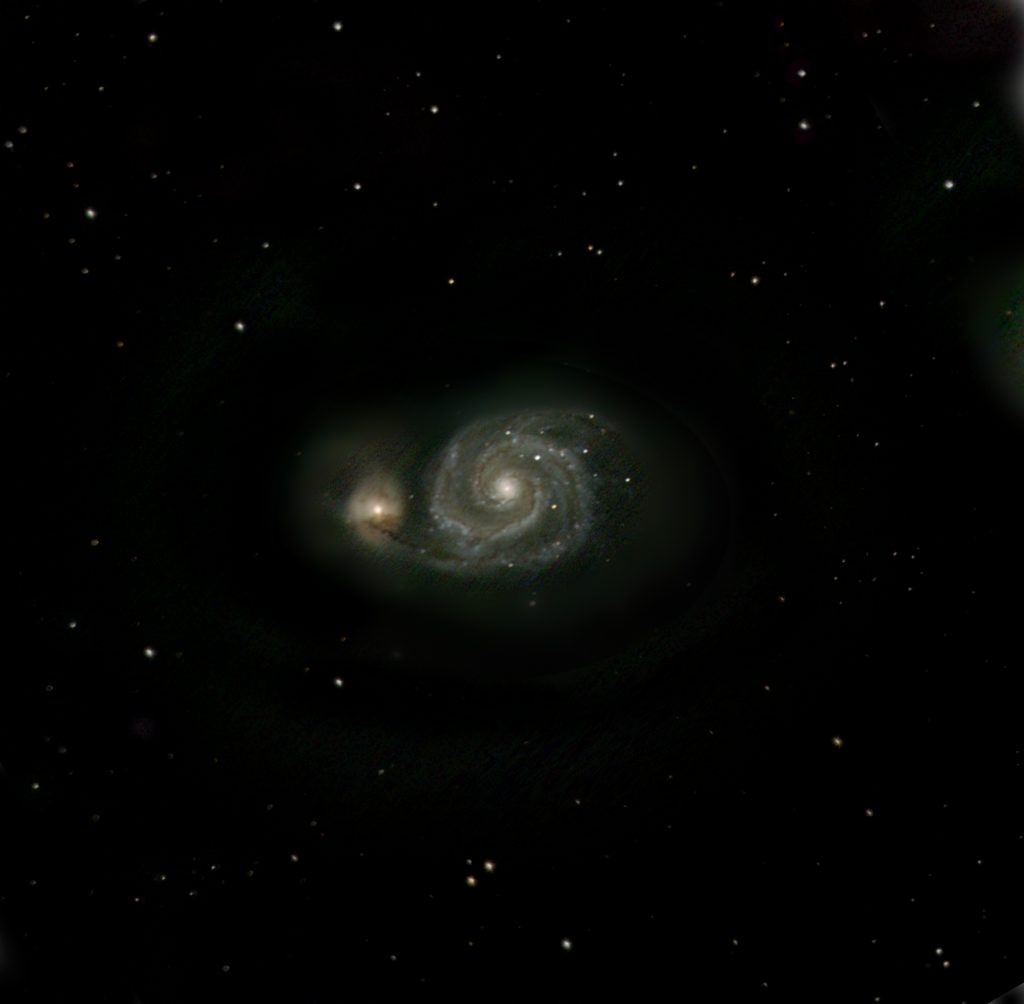
M101, the Pinwheel Galaxy
This was imaged as a waxing Moon, just before first quarter, was high in the sky. For this image, 225, 30 second exposures were taken along with 20 dark frames with the camera sensor at -15 C. Kappa-Sigma stacking was used to remove satellite trails.
